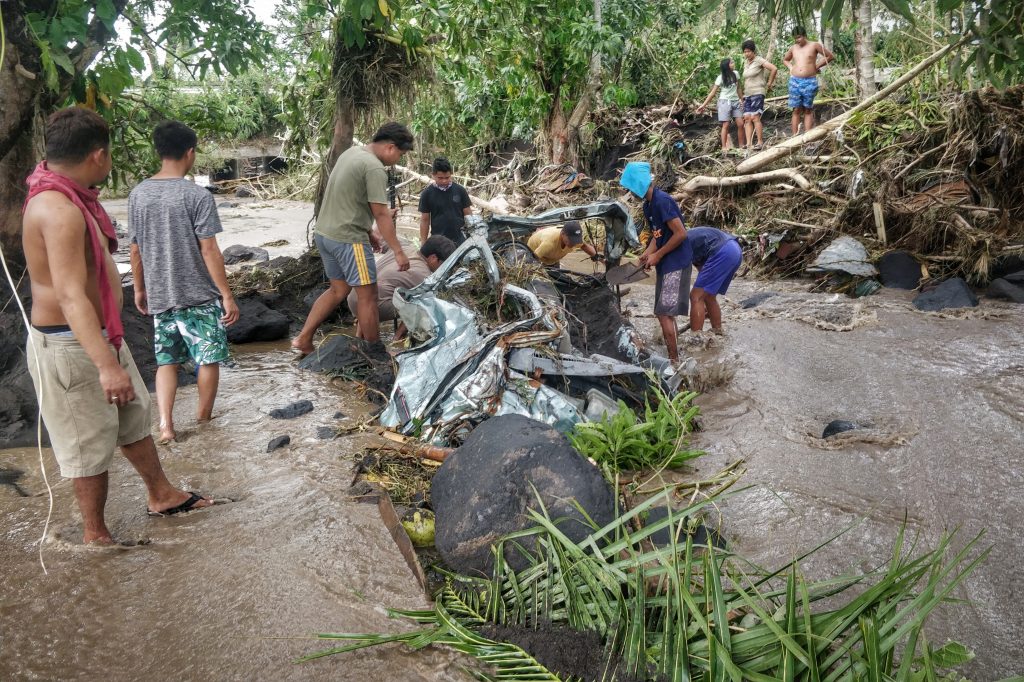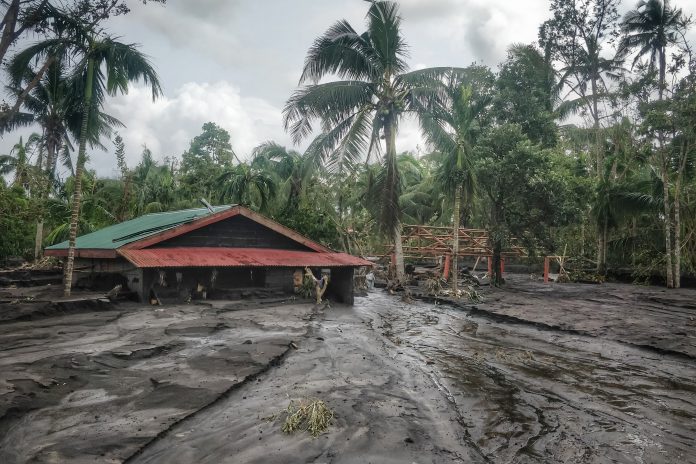Bishop Joel Baylon of Legazpi called on the government to investigate quarrying activities around the scening Mayon Volcano after lahar flows from the mountain buried at least 300 houses during the onslaught of super typhoon “Rolly” (international name: Goni) on November 1.
“We see many factors that should be given attention especially the ongoing quarrying on the slopes of Mayon Volcano that might be partly responsible for the unnecessary big amount of lahar flowing down,” said Bishop Baylon.
When super typhoon “Rolly” slammed the province of Albay, about 300 houses in Guinobatan town were buried under volcanic rocks and mud flows from Mayon.
“We are trying to call the attention of the government to address this matter,” said Bishop Baylon in an interview with LiCAS.news.
The prelate said that while “there is not much we can do with nature’s wrath,” recent studies on the frequency and increasing intensity of typhoons seem to point to human activity as partly responsible. “[In that aspect], I believe there is more to be done,” he said.
“While I may not have the power nor resources to lessen a typhoon’s intensity, I have the capacity to do small things that can mitigate unnecessary destruction when disasters come,” said the bishop as he urged people to be more responsible, especially in cutting trees.
“There are reminders from government agencies, but still irresponsible cutting is happening. We don’t have much logs here anymore, we don’t have forested areas,” he said.
“We can not stop mother nature, but we can lessen the destruction and deaths if we are going to be more responsible with the way we deal with things,” said the bishop.

In 2006, super typhoon Reming (international name: Durian) also caused massive destruction in the Bicol region, leaving 1,366 people dead after mud flowed from Mayon Volcano.
Ed Laguerta, former regional chief of the Philippine Institute of Volcanology and Seismology in the region, earlier cautioned against lahar flows like what happened during typhoon Reming.
Congressman Zaldy Co of the party-list group Ako Bicol also called on the Department of Environment and Natural Resources to limit mining and quarrying activities around the volcano.
“Over extraction leads to death and destruction. We cannot sacrifice lives and properties just for the benefit of a few,” said the legislator in a statement.
“We must learn our lesson: we can save many lives if we ban over extraction of aggregates in Mount Mayon,” he said.
Super typhoon “Rolly” left the country early morning of November 2 with at least 10 deaths and three others missing, and about more 390,000 people displaced from their homes.









